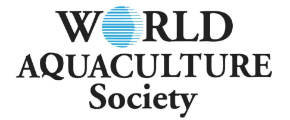Economic Impacts of Infectious Disease on Aquaculture Development
There are thousands of rikketsial, viral, bacterial, protozoan and metazoan parasites that cause disease in farmed aquatic animals. According to the FAO, disease outbreaks cost the global aquaculture industry some US$6 billion per year and represent the major firm-level risk. The shrimp industry alone has suffered losses on the order of US$10 billion since 1990 and new diseases are appearing every year. Vietnam alone reports losing an average of US$1 billion per year to disease. The Chilean salmon farming industry is in the process of recovering from a severe outbreak of infectious salmon anemia virus (ISAv) which began in 2007 and cost 350,000 to 400,000 tons of fish, US$2 billion dollars and 20,000 jobs. Virtually all of these catastrophes have occurred in developing countries where over 90% of aquaculture takes place, reducing revenues, eliminating jobs and threatening food security. The fact that most aquaculture is small-scale, rural and found in developing countries means that the vast majority of diseases go undiagnosed, untreated and undocumented, imposing an enormous burden on communities working to escape poverty.
The Global Aquaculture Alliance has estimated that US$100 billion of new investment might be needed to meet the global food security and rural development objectives set out for aquaculture. Many investors want to engage in aquaculture, but hesitate in the face of risk. According to Suisse-RE, a major agricultural crop insurer, the average insurance loss ratio for aquaculture over the period 1992-2012 was 65% and disease accounts for 20% of total losses in the relatively well managed salmon farming industry.
Diseases do not stay on farms. While the basics of farm-level disease management are known, the interconnectedness among aquaculture installations and between aquaculture and the external environment means that only a few careless farms can ruin an industry. The sector-level biosecurity and response planning that is needed to address problems beyond the farm gate require communication and cooperation among farmers, extension personnel, veterinary services and government regulators.
Considering the gravity and frequency of fish disease outbreaks, guidelines on the development and implementation of national policies for their prevention, detection and management are urgently needed. Hampering this is the lack of a comprehensive overview of the practical ways and means of regulating aquaculture that would permit both governments and aquaculturists to: 1) calculate the cost:benefit ratio of investments in disease control and, 2) find a cost-effective strategy for the implementation of best practices.













